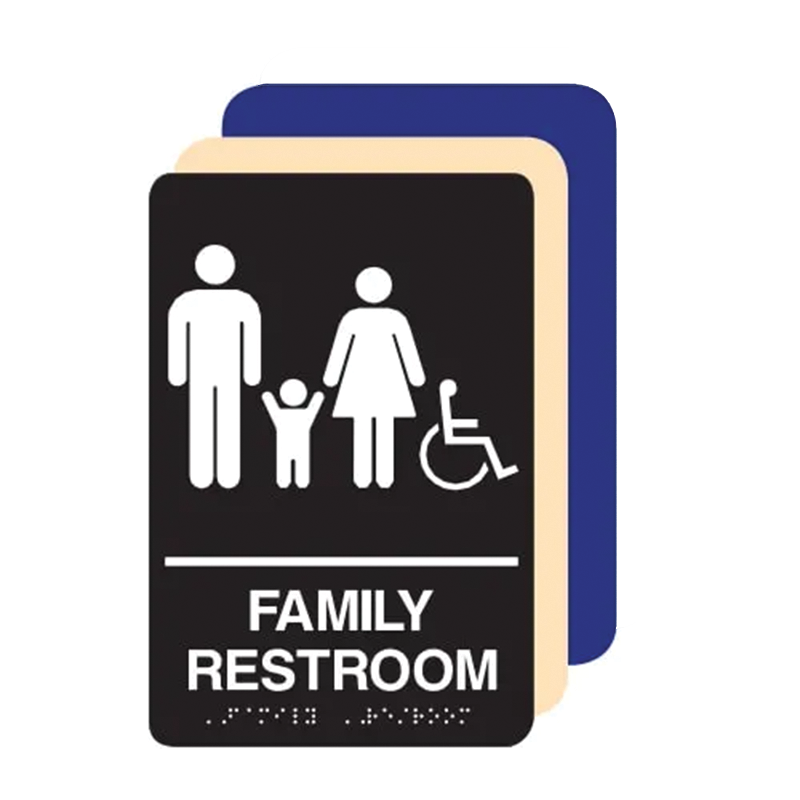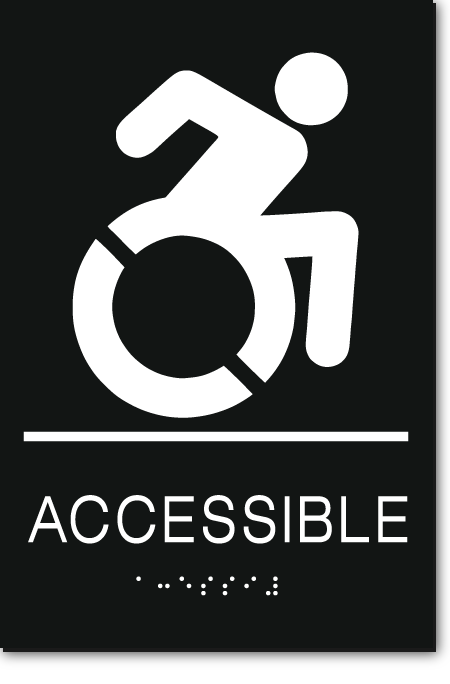Checking Out Creative Layouts for Efficient ADA Signs
Checking Out Creative Layouts for Efficient ADA Signs
Blog Article
Exploring the Key Features of ADA Indicators for Boosted Access
In the realm of availability, ADA signs offer as quiet yet effective allies, ensuring that areas are navigable and inclusive for people with impairments. By incorporating Braille and tactile elements, these indications break barriers for the visually impaired, while high-contrast shade plans and readable typefaces provide to diverse aesthetic requirements.
Importance of ADA Conformity
Guaranteeing conformity with the Americans with Disabilities Act (ADA) is critical for promoting inclusivity and equal accessibility in public areas and offices. The ADA, passed in 1990, mandates that all public facilities, companies, and transportation services accommodate individuals with specials needs, guaranteeing they delight in the exact same rights and opportunities as others. Compliance with ADA requirements not just meets lawful obligations but also improves an organization's track record by showing its dedication to variety and inclusivity.
Among the crucial facets of ADA conformity is the execution of accessible signs. ADA signs are designed to make certain that people with handicaps can quickly browse via spaces and structures. These signs must adhere to specific standards pertaining to dimension, font style, color contrast, and placement to assure presence and readability for all. Properly applied ADA signs assists get rid of barriers that people with handicaps often encounter, therefore advertising their self-reliance and self-confidence (ADA Signs).
Additionally, adhering to ADA policies can mitigate the threat of possible penalties and legal repercussions. Organizations that fall short to adhere to ADA standards may face penalties or lawsuits, which can be both destructive and monetarily troublesome to their public photo. Therefore, ADA compliance is important to fostering a fair atmosphere for every person.
Braille and Tactile Elements
The consolidation of Braille and responsive elements into ADA signage symbolizes the concepts of ease of access and inclusivity. It is normally positioned under the corresponding text on signage to guarantee that individuals can access the information without visual assistance.
Responsive elements expand past Braille and consist of increased characters and symbols. These elements are developed to be noticeable by touch, permitting people to determine space numbers, washrooms, exits, and various other essential locations. The ADA sets specific standards concerning the dimension, spacing, and positioning of these tactile elements to maximize readability and make certain uniformity across different settings.
High-Contrast Color Design
High-contrast color pattern play a critical function in enhancing the presence and readability of ADA signage for people with visual impairments. These systems are crucial as they maximize the distinction in light reflectance between text and background, ensuring that indications are easily noticeable, also from a range. The Americans with Disabilities Act (ADA) mandates the use of details color contrasts to suit those with limited vision, making it a crucial facet of compliance.
The efficiency of high-contrast colors exists in their capacity to stand out in numerous lighting problems, consisting of dimly lit atmospheres and locations with glare. Typically, dark text on a light history or light message on a dark background is employed to achieve optimum comparison. As an example, black message on a white or yellow history offers a plain aesthetic distinction that aids in fast recognition and understanding.

Legible Fonts and Text Dimension
When thinking about the design of ADA signage, the selection of understandable typefaces and ideal message size can not be overstated. The Americans with Disabilities Act (ADA) mandates that fonts have to be not italic and sans-serif, oblique, manuscript, extremely decorative, our website or of investigate this site uncommon type.
According to ADA guidelines, the minimal text elevation ought to be 5/8 inch, and it needs to enhance proportionally with viewing range. Consistency in text dimension contributes to a natural visual experience, assisting individuals in browsing atmospheres successfully.
Moreover, spacing between lines and letters is important to legibility. Ample spacing prevents characters from showing up crowded, enhancing readability. By sticking to these criteria, designers can significantly boost ease of access, ensuring that signage offers its intended objective for all individuals, no matter of their visual abilities.
Reliable Placement Methods
Strategic positioning of ADA signs is crucial for optimizing accessibility and guaranteeing compliance with lawful criteria. ADA standards state that signs should be placed at an elevation between 48 to 60 inches from the ground to ensure they are within the line of view for both standing and seated individuals.
Furthermore, signs have to be put adjacent to the lock side of doors to permit very easy identification prior to entrance. Consistency in sign positioning throughout a center improves predictability, minimizing confusion and improving total individual experience.

Verdict
ADA signs play an essential function in advertising availability by integrating attributes that address the demands of people with disabilities. These aspects jointly foster a comprehensive setting, underscoring the value of ADA compliance in ensuring equal access for all.
In the realm of accessibility, ADA indicators offer as silent yet powerful allies, ensuring that areas are navigable and inclusive for individuals with impairments. The ADA, passed in 1990, mandates that all public facilities, employers, and transport solutions accommodate individuals with disabilities, ensuring they delight in the exact same legal rights and opportunities as others. ADA Signs. ADA indicators are created to guarantee that individuals with disabilities can easily browse with rooms and buildings. ADA guidelines specify that indicators ought to be installed at an elevation between 48 to 60 inches from the ground to guarantee they are within the line of view for both standing and seated individuals.ADA signs play an you can try these out essential role in advertising accessibility by integrating features that resolve the needs of people with impairments
Report this page